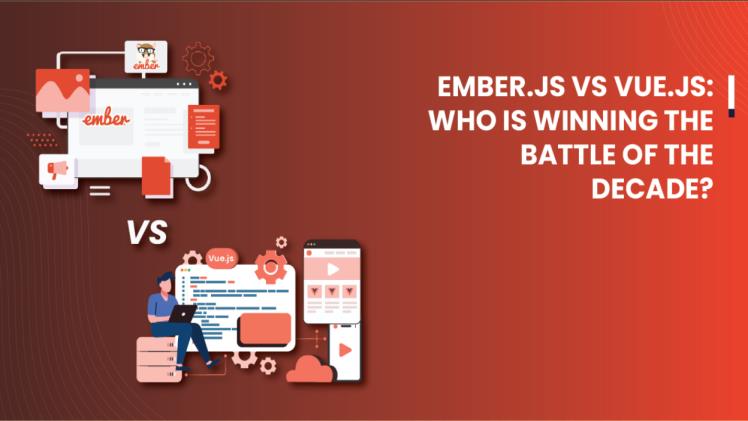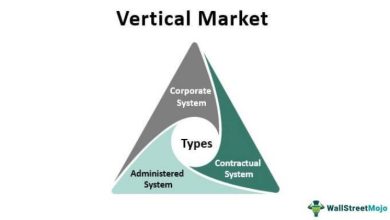Ember.js vs Vue.js: Who Is Winning The Battle Of The Decade?

Scaling the Heights for Vue.js and Ember.js for the Quest of Effective Web Development
Javascript was built for the sole purpose of operating on web applications, but now it has also become one of the preferred frameworks for mobile app development as well. The reason behind this is that the development tasks can be carried out with the help of simplified coding and can be utilized with any framework. Businesses that are planning to build an app usually look out for frameworks depending on how fast it could be built and how it may be of use. Currently, there are two frameworks that are standing out in the market, which are Vue.js and Ember.js, and has led to the emergence of various Vue.js and Ember JS Development Companies.
Vue has turned out to be one of the trailblazing frameworks as it effortlessly facilitates the development of single-page applications (SPAs) and user interfaces for other applications. As a sophisticated framework, it assists in the progressive advancement of SPAs and other applications. Meanwhile, Ember is also an up-and-coming framework that is usually preferred for carrying out the web development process while providing a remarkable user interface that can be functional across most devices. Both frameworks are capable of providing an ample amount of scalability that facilitates future-proofing opportunities. So, the question is likely to arise: out of these two, which one would be more resourceful to carry out the web development process to fulfill the arising business requirements?
Accelerating App Development, Elevating UI Brilliance and Supporting Community Synergy
Vue.js can undergo gradual integration or migration with the code while simultaneously developing features without having to spend too much time in the development process. As the framework is recurrently upgraded with a newer version, the framework tends to get faster and lighter. Vue’s optimisation ability enables developers to place their focus on adding more features rather than just merely tweaking code or debugging. It comprises a strong production environment as the updates are made by default, which means it doesn’t necessitate manual updates or constantly looking out for bug-related errors. It is instrumental in providing an extensive set of API features that are function-centric, which renders the composition of components extensive as well as flexible. Some of the application features become more extendable and readable.
Creating unconventional front-end based applications with exemplary UI elements, lighter components and lesser query codes remarkably enables designers ,developers or Ember Js Development Company in general, to build exceptional digital products. The time involved in the development process of large-scale application is convincingly short thereby facilitating an improved build time. It also helps in creating improved CSS visibility as well as reliable mapping of SCSS to lower parsing and code downloads. It has a proactive community dedicated to constant provision of repositories and resources to enable further discussions of adding new features, keeping track of arising questions and answering them, improving the overall Ember ecosystem with the help of community inputs.
Frameworks at the Crossroad- Unpacking Vue’s and Ember’s Lagging Start in the Tech Landscape
Vue is still one of the most recent frameworks to exist in the tech market which means it consists of a small community and may not be very helpful if developers are posed with certain challenges at the time of handling large-scale projects. The community also faces a language barrier as majority of the discussions take place in Chinese, which hampers the understanding for developers who may not be very familiar with the language and would eventually be unable to learn the framework and carry out different development projects. Some amount of flexibility and the option to make huge customization is very valid but Vue tends to offer way too much of a flexibility, in other words it could potentially over-complicate the project by providing way too many options.
Meanwhile, applications that are built with Ember usually undergo a slower pace at the start as compared to other applications. This is likely to result in a response that may lag constantly, even though the performance picks up after going through a delay for some time. Ember may prove to be beneficial in providing exemplary design choices but may be difficult to integrate with other frameworks. This is because during integration, it may be difficult to find the elements for conducting tests within the application. The computation process is also heavy and complex in terms of size and coding. It may suit large-scale applications but not work well for small-time projects.
Drive Business Success with Brilliant Up-and-Coming Web Development Frameworks
Today’s dynamic web development demands your business to partner with a technology company that doesn’t just understand the intricacies of reliable frameworks but also help in delivering remarkable solutions as per your business requirements. As a UI Development Company we are delivering Ember.js Development Services to assist your business stand out as a beacon of innovation by helping you build winning web applications. Ember facilitates deliberate design choices to provide a structured framework that simplifies development processes for large-scale applications by providing utmost flexibility and simplicity which makes it ideal for projects where rapid development and integration is imminent. Opt for our services to get reliable expertise in Ember.js to create strategic user experiences for your business’s digital products, today!




